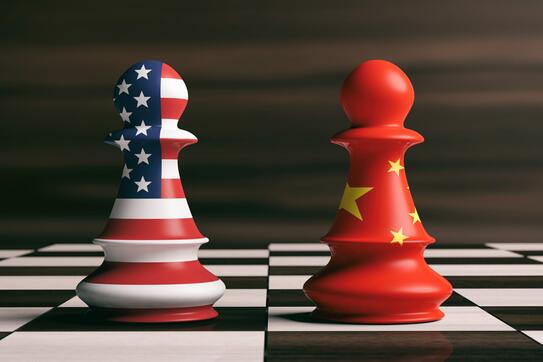As the world’s two largest economies, the United States and China compete in nearly every sector. No other sector has seen fiercer competition than manufacturing, as evidenced by escalating trade disputes since 2010. But who has the upper hand in the global marketplace?
In “A Race to Lead: How Chinese Government Interventions Shape the US-China Production Competition,” Chazen Senior Scholar Wei Jiang and colleagues from Texas A&M and Boston College’s Carroll School of Management find that China production increasingly displaces US production and employment in the same industries, from textiles to telecommunications; but the reverse is not true. Such a competitive relation is particularly profound when it is the result of a concerted effort by the Chinese government to support these industries through subsidies.
This working paper is authored Wei Jiang, the Arthur F. Burns Professor of Free and Competitive Enterprise and a Chazen Senior Scholar at Columbia Business School; Xiao Cen, Assistant Professor at Texas A&M; and Vyacheslav Fos, Associate Professor and Hillenbrand Family Faculty Fellow at Boston College’s Carroll School of Management.
Research
Using establishment-level data covering 1,643,000 US firms and 1,100,000 Chinese firms from 1998–2013, the researchers examined the complex interdependence in industrial production between the US and China.
Of particular interest was the impact of Chinese government support (including subsidies) on sector growth, especially in industries China targeted for economic development and technology leadership. This is the first study that connects data at the business establishment level for the two countries, which traded over $550 billion in 2019, and uncovers the impact of Chinese government support at the micro level on Chinese and US industries.
Results
The research reveals an astounding rebalancing of the economic prowess of the two countries. Over the 15-year period studied, the high birth rate of Chinese firms predicts same-industry exits in the US and lowered employment. When China increases production in any given sector — even in industries in which the US is still in its prime — US employment and production subsequently decrease over one to two years. For every 100 factories opened in China, the US closed 12.5 factories in the same industry on average.
During this same period, the researchers find that industries experiencing growth in both countries had received subsidies from the Chinese government, thereby enhancing China’s competitive position in certain industries and ultimately leading to these industries’ relative decline in the US. The targeted industries, reflected in China’s Five Year plans, were not responding to any pre-existing sign of weakness in US industries. Instead, the five-year plans encouraged increased investment in these specific industries by Chinese firms so that they could compete with or even outperform US firms.
The researchers find that leading economic indicators, such as US stock prices and firms’ “desire to hire” in targeted industries, were completely flat until these five-year plans were announced. Following the announcement, stock prices of firms in affected industries fell by 18.2% within a year. Based on Burning Glass Technologies data, which tracks job postings, the researchers show that after industries are targeted by the five-year plans, US job postings decrease by 11.5%. These changes are ahead of decreases in employment and production. Furthermore, the effect from China’s Five-Year Plans is significantly more pronounced for export-intensive industries.
These findings support the concern that US firms are displaced by China’s manufacturing growth, not just in sunset industries from which the US was prepared to retreat, but also in industries that both countries are eager to lead, such as artificial intelligence and alternative energy.
